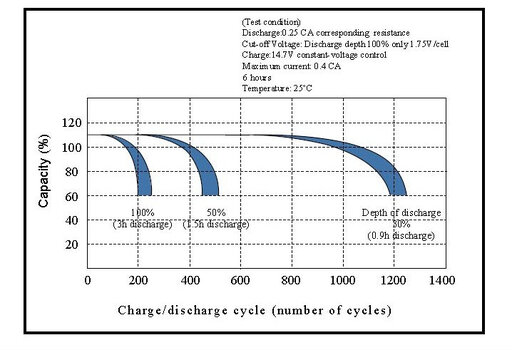The Grenadier Forum
Register a free account today to become a member! Once signed in, you'll be able to contribute to the community by adding your own topics, posts, and connect with other members through your own private inbox! INEOS Agents, Dealers or Commercial vendors please use the contact us link at the bottom of the page.
-
Guest submit your best shot for a chance to win the December Photo Contest. Photo Contest Click Here
You are using an out of date browser. It may not display this or other websites correctly.
You should upgrade or use an alternative browser.
You should upgrade or use an alternative browser.
(The battery and monitor thread )Car dead in the middle of the woods
Best to keep the 120s in play as it can assist in charging the aux battery, especially when it's been discharged overnight by say a 12V fridge or inverter etc. The 120s charge rate ( 'up to' 80A ) will taper off quickly though as the aux battery's state of charge rises, or the alternator's voltage back's off during the drive. Users have reported as little as 5A charging from the 120s when the aux battery was still around 50%.I’m just learning here, used to simpler electrical, but reading about the 120s/250se devices and beginning to be less confused…. Can we simply replace the 120s with the 250se?
it’s also looking like it might be good to re-wire all aux outlets and roof/footwell outlets to run off aux battery or ctek load terminal…
thoughts?
The 120s will also look after the starter battery if it falls below a certain voltage. It will feed charge across from the aux battery to keep it maintained. It also has a start assist mode where it connects the 2 batteries for 10 secs, handy if something has discharged the starter overnight.
You can also run a 12V fridge directly off the Smartpass and it will disconnect the load at 11.8V to protect the aux battery from being damaged, but most fridges have this built-in anyway so they can be run directly off the auxiliary battery.
Always best to run all loads off the aux battery but you need to calculate total Ahrs required. Many will upgrade to a lithium to cater for fridge, lights, inverters etc. The 105Ah EFB battery is not much good for anything more than a 40L fridge.
Jump on YouTube and search Smartpass 120s. Ctek do a series of videos on it and the 250SE unit.
Last edited:
Upvote
0
From theory that´s right until today we all think so. But the incident of today from @das mo shows, that something went wrong. On camping ground you have help from others, or could charge with additional chargers, but in the woods, should be fine to trust Ctek/IA. My choice will be to have a jump starter in my tools, if I´am of civilization.Best to keep the 120s in play as it can assist in charging the aux battery, especially when it's been discharged overnight by say a 12V fridge or inverter etc. The 120s charge rate ( 'up to' 80A ) will taper off quickly though as the aux battery's state of charge rises, or the alternator's voltage back's off during the drive. Users have reported as little as 5A charging from the 120s when the aux battery was still around 50%.
The 120s will also look after the starter battery if it falls below a certain voltage. It will feed charge across from the aux battery to keep it maintained. It also has a start assist mode where it connects the 2 batteries for 10 secs, handy if something has discharged the starter overnight.
You can also run a 12V fridge directly off the Smartpass and it will disconnect the load at 11.8V to protect the aux battery from being damaged, but most fridges have this built-in anyway so they can be run directly off the auxiliary battery.
Always best to run all loads off the aux battery but you need to calculate total Ahrs required. Many will upgrade to a lithium to cater for fridge, lights, inverters etc. The 105Ah EFB battery is not much good for anything more than a 40L fridge.
Jump on YouTube and search Smartpass 120s. Ctek do a series of videos on it and the 250SE unit.
Upvote
0
My experiences are similar with the 120s. It's just a dumb switch and not a smart DC/DC charger like the 250se. I use a DC/AC 220V inverter that I connected directly to the AUX battery. The built-in voltage monitor switches off the inverter at 11.8/11.9 volts.Best to keep the 120s in play as it can assist in charging the aux battery, especially when it's been discharged overnight by say a 12V fridge or inverter etc. The 120s charge rate ( 'up to' 80A ) will taper off quickly though as the aux battery's state of charge rises, or the alternator's voltage back's off during the drive. Users have reported as little as 5A charging from the 120s when the aux battery was still around 50%.
The 120s will also look after the starter battery if it falls below a certain voltage. It will feed charge across from the aux battery to keep it maintained. It also has a start assist mode where it connects the 2 batteries for 10 secs, handy if something has discharged the starter overnight.
You can also run a 12V fridge directly off the Smartpass and it will disconnect the load at 11.8V to protect the aux battery from being damaged, but most fridges have this built-in anyway so they can be run directly off the auxiliary battery.
Always best to run all loads off the aux battery but you need to calculate total Ahrs required. Many will upgrade to a lithium to cater for fridge, lights, inverters etc. The 105Ah EFB battery is not much good for anything more than a 40L fridge.
Jump on YouTube and search Smartpass 120s. Ctek do a series of videos on it and the 250SE unit.
The AUX battery is then relatively empty.
You have to keep in mind that you then have to run the engine for a relatively long time to recharge the AUX. Due to the system, the 120s cannot charge the AUX battery (PowerMosFet in the charging circuit, which creates a voltage drop) as quickly as the starter battery is charged.
It is not enough, as you may know, to let the engine run for 30-60 minutes to charge the car battery. The charging current for the AUX battery quickly goes below 10A and lower.
In any case, the combination with the 250se is recommended, which then charges the AUX battery almost as quickly as the starter battery.
At least these are my experiences after the first few weeks with the Grenny.
All Grennys should actually be equipped with the 120s/250se combination ex works -> planning errors on the part of IA
Upvote
0
Hi Burki, Do you have photos or diagrams on how to wire in a 120s/250se. Also, are you aware of any disadvantages of wiring in a 250se vs just having the 120s, other than those noted above? DaBullMy experiences are similar with the 120s. It's just a dumb switch and not a smart DC/DC charger like the 250se. I use a DC/AC 220V inverter that I connected directly to the AUX battery. The built-in voltage monitor switches off the inverter at 11.8/11.9 volts.
The AUX battery is then relatively empty.
You have to keep in mind that you then have to run the engine for a relatively long time to recharge the AUX. Due to the system, the 120s cannot charge the AUX battery (PowerMosFet in the charging circuit, which creates a voltage drop) as quickly as the starter battery is charged.
It is not enough, as you may know, to let the engine run for 30-60 minutes to charge the car battery. The charging current for the AUX battery quickly goes below 10A and lower.
In any case, the combination with the 250se is recommended, which then charges the AUX battery almost as quickly as the starter battery.
At least these are my experiences after the first few weeks with the Grenny.
All Grennys should actually be equipped with the 120s/250se combination ex works -> planning errors on the part of IA
Upvote
0
The thread itself got a bit too technical for me but fantastic to see how much support there is out there. This really is the best forum.
For the record. If a fellow Grenadier owner was within 50 miles of me and needed assistance, I would do my very best to assist.
For the record. If a fellow Grenadier owner was within 50 miles of me and needed assistance, I would do my very best to assist.
Upvote
0
And meThe thread itself got a bit too technical for me but fantastic to see how much support there is out there. This really is the best forum.
For the record. If a fellow Grenadier owner was within 50 miles of me and needed assistance, I would do my very best to assist.
Upvote
0
As published several times by some clever people here in the forum, see the attachment from the CTEK User Manual.Hi Burki, Do you have photos or diagrams on how to wire in a 120s/250se. Also, are you aware of any disadvantages of wiring in a 250se vs just having the 120s, other than those noted above? DaBull
I connected the 250se to the alternator, not to a solar panel.
Attachments
Upvote
0
Hi Denis
Did you see my post #38 ?
S.O.S. - Car dead in the middle of the woods
Hi all. Car is dead. Battery was at 50% 2 hours back. We now packed all together and car does not start. Is there ab Ineos support hotline I can call on a Sunday? Thankswww.theineosforum.com
Upvote
0
Best to keep the 120s in play as it can assist in charging the aux battery, especially when it's been discharged overnight by say a 12V fridge or inverter etc. The 120s charge rate ( 'up to' 80A ) will taper off quickly though as the aux battery's state of charge rises, or the alternator's voltage back's off during the drive. Users have reported as little as 5A charging from the 120s when the aux battery was still around 50%.
The 120s will also look after the starter battery if it falls below a certain voltage. It will feed charge across from the aux battery to keep it maintained. It also has a start assist mode where it connects the 2 batteries for 10 secs, handy if something has discharged the starter overnight.
You can also run a 12V fridge directly off the Smartpass and it will disconnect the load at 11.8V to protect the aux battery from being damaged, but most fridges have this built-in anyway so they can be run directly off the auxiliary battery.
Always best to run all loads off the aux battery but you need to calculate total Ahrs required. Many will upgrade to a lithium to cater for fridge, lights, inverters etc. The 105Ah EFB battery is not much good for anything more than a 40L fridge.
Jump on YouTube and search Smartpass 120s. Ctek do a series of videos on it and the 250SE unit.
Thanks for your detailed answer, and I’ve looked at the CTEK wiring diagram. I understand the functions you describe of the 120s (although not why it failed das mo…)
assuming for now that I have no solar, the only connection the 250se has is the link to the 120s, one + and one common ground. How does it, how can it affect charging to the service battery?
Upvote
0
Isn't the auxillary battery used to help charge the main battery?From what i understand the AUX battery is only being used to top up the main battery. The external power outlets and the 12V socket in the cargo area use the main battery, or am i wrong? Question is why is none of this explained in the user manual?Surely the boot 12v socket is wired direct off the main battery as it is a standard feature on all cars and not just those with aux battery.
Upvote
0
You might be aware but allowing the battery to drop this low regularly is not wise for battery life. Best practice is to maintain as close to 50% SOC (state of charge) or ~12.2V as often as possible as batteries have a finite cycle life.The built-in voltage monitor switches off the inverter at 11.8/11.9 volts.
By running it down under 12.0V often, you dramatically reduce the life of the aux battery. The AGM chart below shows what happens to cycle life when the batterys depth of charge is regularly taken to 30, 50 & 100%. The same chart can apply to these EFB batteries as they have similar characteristics.
Attachments
Upvote
0
@das mo might be able to confirm but it sounds like the aux and starter battery were both depleted. Maybe from a fridge running off the cig point in the cargo area draining the starter and other consumers such as camp lights, inverters, phone/laptop chargers draining the aux battery, and/or the aux battery was only half charged to start, either from the previous nights loads or some recent use, and it hadn't had enough engine time to recharge fully. Even with the 2 batteries connected by the Smartpass start assist there wasn't enough charge to turn the engine over. Also, the start assist can be unreliable, reports of this on youtube from users.But the incident of today from @das mo shows, that something went wrong.
Last edited:
Upvote
0
See my reply just above re why it might've failed for das mo.Thanks for your detailed answer, and I’ve looked at the CTEK wiring diagram. I understand the functions you describe of the 120s (although not why it failed das mo…)
assuming for now that I have no solar, the only connection the 250se has is the link to the 120s, one + and one common ground. How does it, how can it affect charging to the service battery?
The Smartpass and 250SE become one unit. Current is supplied to the 250SE from the alternator via the Smartpass, current passes through the 250SE back to the Smartpass and on to the aux battery. On the way through, the 250SE boosts the voltage per it's charging regime (dependant on the aux battery's SOC), but it can only supply a max of 20A charge. The Smartpass unit itself also attempts to charge the aux battery directly across its terminals but relies solely on the voltage the smart alternator is producing, it can't boost voltage so outputs 3/5ths of bugger all if the alternator is supplying less than required voltage, especially once the aux battery SOC rises above around 75%.
I won't be fitting the 250SE as I'll replace the OEM auxiliary with a lithium battery. Lithium can be discharged without effect down to ~10% SOC so have a greater capacity than lead acid with the same Ahr rating. They also hold voltage above ~12.8V all the way down to that 10% so it doesn't affect fridges or inverters that cut off under load when voltage falls below ~11.8V, as with the EFB batteries. Lithium are also lighter and charge substantially faster as they have very little internal resistance right up to full charge. They will accept everything you throw at them until they reach ~99% SOC. This is a big advantage when relying on engine time to charge the aux battery. I figure the Smartpass will also charge directly at a much higher rate to the lower resistance of lithium, we'll have to see. I don't expect it to charge at over 14.4V as most alternators seem to stop there and typically you get losses due to cabling and distance from alternator to starter. 14.4V is still fine though for LiFeP04 lithium drop-ins with a built-in BMS. Depends how it plays with the Victron 30A BT Smart DC charger I'll be using. These can be custom programmed correctly for lithium and offers BT monitoring / switching and a 50% higher charge rate than the 250SE. I also carry a 5kg 200W folding solar panel I can deploy when camped up for a few days. This supplies 10-15A so can replace 50-75Ahrs/day in good weather. It'll run through a dedicated Victron 12V/20A MPPT Smart BT controller via an Anderson plug connected to the aux battery. This is all still in the planning stages so could change as info comes to light on the Smartpass. I'll put a post up down the track once the system is up and running.
Upvote
0
- Local time
- 7:14 PM
- Joined
- Aug 24, 2022
- Messages
- 2,470
D250SE plus Smartpass 120S is both solar and Lithium compatible.See my reply just above re why it might've failed for das mo.
The Smartpass and 250SE become one unit. Current is supplied to the 250SE from the alternator via the Smartpass, current passes through the 250SE back to the Smartpass and on to the aux battery. On the way through, the 250SE boosts the voltage per it's charging regime (dependant on the aux battery's SOC), but it can only supply a max of 20A charge. The Smartpass unit itself also attempts to charge the aux battery directly across its terminals but relies solely on the voltage the smart alternator is producing, it can't boost voltage so outputs 3/5ths of bugger all if the alternator is supplying less than required voltage, especially once the aux battery SOC rises above around 75%.
I won't be fitting the 250SE as I'll replace the OEM auxiliary with a lithium battery. Lithium can be discharged without effect down to ~10% SOC so have a greater capacity than lead acid with the same Ahr rating. They also hold voltage above ~12.8V all the way down to that 10% so it doesn't affect fridges or inverters that cut off under load when voltage falls below ~11.8V, as with the EFB batteries. Lithium are also lighter and charge substantially faster as they have very little internal resistance right up to full charge. They will accept everything you throw at them until they reach ~99% SOC. This is a big advantage when relying on engine time to charge the aux battery. I figure the Smartpass will also charge directly at a much higher rate to the lower resistance of lithium, we'll have to see. I don't expect it to charge at over 14.4V as most alternators seem to stop there and typically you get losses due to cabling and distance from alternator to starter. 14.4V is still fine though for LiFeP04 lithium drop-ins with a built-in BMS. Depends how it plays with the Victron 30A BT Smart DC charger I'll be using. These can be custom programmed correctly for lithium and offers BT monitoring / switching and a 50% higher charge rate than the 250SE. I also carry a 5kg 200W folding solar panel I can deploy when camped up for a few days. This supplies 10-15A so can replace 50-75Ahrs/day in good weather. It'll run through a dedicated Victron 12V/20A MPPT Smart BT controller via an Anderson plug connected to the aux battery. This is all still in the planning stages so could change as info comes to light on the Smartpass. I'll put a post up down the track once the system is up and running.
Upvote
0
Yes, once the auxiliary is charged it will then maintain the starter. From reading owner's comments on here the roof outlets and the cig socket in the cargo area are supplied by the starter battery so not a good idea to plug a fridge in there. An LED work light on the roof may be ok for a few hours. I not 100% on whether you get a cig socket in the cargo area if not optioning the high load switches & aux battery but most modern vehicles do offer this although it's only live with the engine running. In the Jeep GC you can move the fuse to a different position so that the cargo cig socket is always on but they have an AGM battery so a little more leeway there to run a small fridge. Ineos likely just ran out of time so had to prioritise the too hard baskets and putting out fires to get the car to market.Isn't the auxillary battery used to help charge the main battery?From what i understand the AUX battery is only being used to top up the main battery. The external power outlets and the 12V socket in the cargo area use the main battery, or am i wrong? Question is why is none of this explained in the user manual?
Upvote
0
The whole reason i went with the auxillary battery was to use it to power my fridge and camp lighting etc. Bit of a shame i can't use it for that purpose but perhaps there will be a work around in the futureYes, once the auxiliary is charged it will then maintain the starter. From reading owner's comments on here the roof outlets and the cig socket in the cargo area are supplied by the starter battery so not a good idea to plug a fridge in there. An LED work light on the roof may be ok for a few hours. I not 100% on whether you get a cig socket in the cargo area if not optioning the high load switches & aux battery but most modern vehicles do offer this although it's only live with the engine running. In the Jeep GC you can move the fuse to a different position so that the cargo cig socket is always on but they have an AGM battery so a little more leeway there to run a small fridge. Ineos likely just ran out of time so had to prioritise the too hard baskets and putting out fires to get the car to market.
Upvote
0
Yes it's a good pairing for majority of users but I prefer to set my charge voltages for the LiFePO4 at no more than 14.1V as this achieves 98-99% SOC, so there's no need to stress the cells past that to get another 1 or 2 Ahrs. But more importantly it avoids the risk of voltage runaway on the cells, unlikely these days but lets me sleep at night.D250SE plus Smartpass 120S is both solar and Lithium compatible.
Upvote
0
Yes it's an expensive option but you get the Smartpass and all the cabling so easy to retro fit other gear. The EFB battery will run a 40L fridge (not a freezer) as long as you don't sit camped and keep on the move, but you'll still have to mother it.The whole reason i went with the auxillary battery was to use it to power my fridge and camp lighting etc. Bit of a shame i can't use it for that purpose but perhaps there will be a work around in the future
Upvote
0
Similar threads
- Question
- Replies
- 8
- Views
- 538
- Replies
- 14
- Views
- 1K
- Replies
- 44
- Views
- 3K
- Replies
- 14
- Views
- 718




